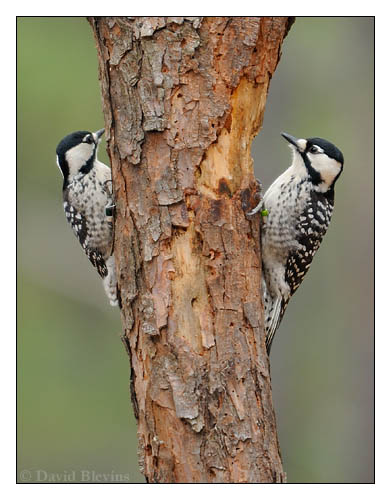Red-cockaded woodpeckers are unlike other woodpeckers in that they build nest cavities in live pine trees. Other, seemingly more sensible woodpeckers excavate their nest cavities in the softer rotten wood of dead trees. It is difficult to build a nest cavity in a live pine tree, and as a result, young red-cockaded woodpeckers often stay with their parents for years rather than move out and excavate their own cavity. This means the parents have some help raising the next set of young, but it also means there are fewer birds raising their own families. These extended families often forage together, constantly calling back and forth to stay in contact with each other.

Red-cockaded Woodpecker
Red-cockaded woodpeckers prefer to build their cavities in old growth longleaf pine trees. These trees often have heart rot that makes the core of the tree soft and easier for the birds to excavate once they hammer through the hard, sticky sapwood. Old growth longleaf pine has all but disappeared from the landscape, making it difficult for these birds to find suitable nesting and foraging sites. With their preferred nesting trees all but gone it is no surprise that the red-cockaded woodpecker is on the endangered species list.
It might seem like these birds are making things difficult for themselves by insisting on nesting in live pine trees. This was a good strategy hundreds of years ago when the frequent fires that maintained the longleaf pine savannas would have burned away any dead trees. In just a few hundred years we have changed the landscape to suit our needs by eliminating fires and converting the savannas to other uses. Some animals have benefited from these changes; the red-cockaded woodpecker has not.
